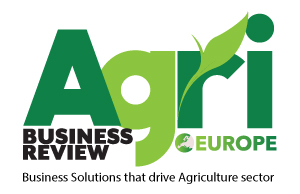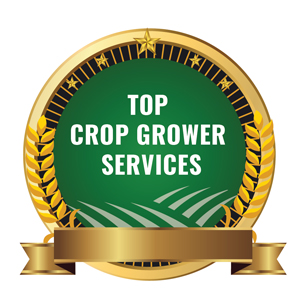Scaling Agricultural Supply Chains for a Borderless Global Market
Wednesday, November 05, 2025
The agricultural distribution sector is undergoing a transformation driven by technology adoption, sustainability efforts, and evolving consumer expectations. These changes are boosting operational efficiency, improving food traceability, and encouraging environmentally responsible practices.
The agricultural product distribution industry stands as a cornerstone of the global economy, facilitating the movement of food, feed, fuel, and fiber from farm to table. This intricate network, a critical component of the broader agricultural market, is undergoing a profound transformation driven by technological advancements, evolving consumer demands, and a heightened focus on efficiency and sustainability.
At its core, agricultural product distribution encompasses a wide array of activities, from the initial aggregation of raw agrarian goods to their processing, packaging, and ultimate delivery to various end-users. This involves a complex interplay of logistics, warehousing, transportation, and market intelligence. Distributors are responsible for ensuring that products, often perishable, maintain their quality and freshness throughout the supply chain, reaching diverse markets efficiently. This necessitates sophisticated planning and execution, adapting to varying product types, ranging from bulk grains and oilseeds to delicate fruits and vegetables, as well as diverse distribution channels, including hypermarkets, supermarkets, convenience stores, and, increasingly, e-commerce platforms. The agricultural logistics market alone is estimated to be worth $267.89 billion in 2025 and is expected to reach $330.20 billion by 2030, underscoring the significant role of efficient goods movement.
Technological Integration and Efficiency
A key trend shaping the industry is the accelerating integration of technology across all stages of the distribution process. Precision agriculture, powered by data analytics, IoT sensors, satellite imagery, and drones, is becoming instrumental in optimizing crop management at the farm level, which directly impacts the quality and quantity of products entering the distribution pipeline. This digital transformation extends to logistics, where real-time tracking, predictive analytics, and automated warehouse management systems are enhancing efficiency and reducing waste. The rise of AI and machine learning models for demand forecasting and inventory optimization enables distributors to anticipate market needs with greater accuracy, thereby minimizing overproduction and spoilage. For instance, AI-powered systems can provide insights into ideal sowing times, fertilizer application, and harvesting schedules, leading to significant increases in productivity and income.
Blockchain technology is gaining traction for its ability to enhance traceability and transparency within the agricultural supply chain. By creating immutable records of a product's journey from its origin to the consumer, blockchain fosters trust, ensures food safety, and simplifies compliance with various regulations. This increased visibility benefits not only consumers, who are increasingly demanding information about the provenance and production methods of their food, but also empowers farmers and distributors to manage their operations more effectively. The adoption of such technologies is expected to reduce transaction risks by up to 40 percent in agricultural commodities trading.
Sustainability and Evolving Consumer Demands
The industry is also witnessing a significant shift towards more sustainable practices. Growing awareness regarding environmental degradation, soil health, water scarcity, and biodiversity loss is driving demand for sustainably sourced agricultural commodities. This is influencing distribution strategies, with a greater emphasis on eco-friendly certifications, transparent supply chains, and reduced environmental footprints. Distributors are exploring options such as optimized transportation routes to reduce emissions, implementing eco-friendly packaging materials, and supporting agricultural practices that minimize resource consumption. The concept of a circular economy is gaining ground, promoting reusable packaging solutions and minimizing waste throughout the distribution cycle. This push for sustainability extends to reducing food waste during transit and storage through improved tracking and temperature-controlled logistics.
In terms of market dynamics, consumer preferences are a powerful driving force. The increasing demand for organic, ethically sourced, and locally produced foods is prompting distributors to adapt their sourcing and delivery models. This can lead to shorter supply chains and more direct connections between producers and consumers, often facilitated by digital marketplaces. The globalization of food trade continues to be a defining characteristic, providing year-round access to a broader variety of products and seasonal foods. This global reach, however, underscores the need for robust international logistics and efficient customs processes. The rise of vertical farming and urban agriculture also presents new avenues for localized distribution, reducing the distance from farm to consumer.
The agricultural product distribution landscape is also being shaped by the increasing demand for specialized products, such as plant-based alternatives and functional ingredients that cater to health-conscious consumers. This diversification in product offerings requires distributors to manage more complex inventories and specialized storage and transportation conditions. The expansion into emerging markets is also a significant driver, requiring adaptable distribution networks to cater to diverse regional demands and infrastructure capabilities. Countries with large agricultural output and growing population are seeing significant investments in enhancing storage and logistics infrastructure.
The future of agricultural product distribution is closely tied to ongoing innovation and adaptability. The continuing development of innovative packaging technologies that monitor product quality in real-time, the adoption of autonomous vehicles for transport, and the further integration of AI-powered systems for route optimization and demand-supply matching are poised to revolutionize the sector. The industry is moving towards highly integrated digital platforms that offer greater responsiveness to market demands and foster more cost-effective and less labor-intensive supply chains. This evolution promises a future where agricultural products are distributed with unprecedented efficiency, transparency, and minimal environmental impact, ultimately contributing to global food security and economic prosperity.














